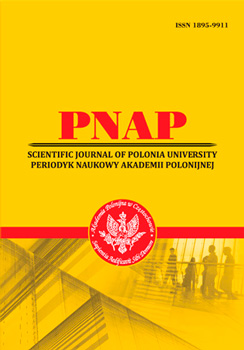CHANGEMENTS DE L’ULTRASTRUCTURE DE LA MUQUEUSE DU GROS INTESTIN LORS D’UNE PANCREATITE AIGUE
Abstract
Parmi les patients atteints de pathologie abdominale aiguë qui ont été hospitalisés dans des hôpitaux chirurgicaux, environ 5% sont des patients atteints de pancréatite aiguë. De plus, au cours des dernières décennies, il y a eu une augmentation multiple du taux d'incidence. Selon de nombreuses études dans les pays industrialisés, l'incidence de la pancréatite aiguë est de l'ordre de 200 à 800 nouveaux cas de pancréatite aiguë pour 1 million d'habitants par an. Selon de nombreux chercheurs, l'un des principaux facteurs à l'origine de la pancréatite aiguë sévère est l'invasion de bactéries gram-négatives à partir du côlon, par translocation bactérienne pathologique. Ce mécanisme peut jouer un rôle majeur dans le développement de complications septiques – "la mort commence dans le côlon, qui, dans une pathologie abdominale aiguë, se transforme en un abcès non drainé". L’aticle présente les résultats de l’étude concernant les particularités de l’ultrastructure de la muqueuse du gros intestin chez les malades avec pancréatite aiguë. Sur la base de l’analyse de 75 microphotos il a été constaté que l’épicentre principal des changements destructifs se trouvait dans les couches externes de la muqueuse du côlon. Les changements signalés ont été qualifiés comme les signaux précurseurs du développement de la translocation bactérienne pathologique.
References
2. van Dijk, S. M., Hallensleben, N., van Santvoort, H. C., Fockens, P., van Goor, H., Bruno, M. J., Besselink, M. G., & Dutch Pancreatitis Study Group (2017). Acute pancreatitis: recent advances through randomised trials. Gut, 66(11), 2024–2032. https://doi.org/10.1136/ gutjnl-2016-313595
3. Trikudanathan, G., Wolbrink, D., van Santvoort, H. C., Mallery, S., Freeman, M., & Besselink, M. G. (2019). Current Concepts in Severe Acute and Necrotizing Pancreatitis: An Evidence-Based Approach. Gastroenterology, 156(7), 1994–2007.e3. https://doi.org/10.1053/ j.gastro.2019.01.269
4. Assimakopoulos, S. F., Triantos, C., Thomopoulos, K., Fligou, F., Maroulis, I., Marangos, M., & Gogos, C. A. (2018). Gut-origin sepsis in the critically ill patient: pathophysiology and treatment. Infection, 46(6), 751–760. https://doi.org/10.1007/s15010-018-1178-5
5. Marshall, J. C., Christou, N. V., & Meakins, J. L. (1993). The gastrointestinal tract. The "undrained abscess" of multiple organ failure. Annals of surgery, 218(2), 111–119. https://doi.org/10.1097/00000658-199308000-00001
6. Fukatsu K. (2019). Role of nutrition in gastroenterological surgery. Annals of gastroenterological surgery, 3(2), 160–168. https://doi.org/10.1002/ags3.12237
7. Li, X. Y., He, C., Zhu, Y., & Lu, N. H. (2020). Role of gut microbiota on intestinal barrier function in acute pancreatitis. World journal of gastroenterology, 26(18), 2187–2193. https:// doi.org/10.3748/wjg.v26.i18.2187
8. Bengmark S. (2013). Gut microbiota, immune development and function. Pharmacological research, 69(1), 87–113. https://doi.org/10.1016/j.phrs.2012.09.002
9. Spanier, B. W., Bruno, M. J., & Mathus-Vliegen, E. M. (2011). Enteral nutrition and acute pancreatitis: a review. Gastroenterology research and practice, 2011, 857949. https://doi.org/10.1155/2011/857949
10. Liu, J., Huang, L., Luo, M., & Xia, X. (2019). Bacterial translocation in acute pancreatitis. Critical reviews in microbiology, 45(5-6), 539–547. https://doi.org/10.1080/10408 41X.2019.1621795
11. Nagpal, R., & Yadav, H. (2017). Bacterial Translocation from the Gut to the Distant Organs: An Overview. Annals of nutrition & metabolism, 71 Suppl 1, 11–16. https://doi.org/10.1159/000479918
12. Slyepchenko, A., Maes, M., Jacka, F. N., Köhler, C. A., Barichello, T., McIntyre, R. S., Berk, M., Grande, I., Foster, J. A., Vieta, E., & Carvalho, A. F. (2017). Gut Microbiota, Bacterial Translocation, and Interactions with Diet: Pathophysiological Links between Major Depressive Disorder and Non-Communicable Medical Comorbidities. Psychotherapy and psychosomatics, 86(1), 31–46. https://doi.org/10.1159/000448957.
Abstract views: 224 PDF Downloads: 148







